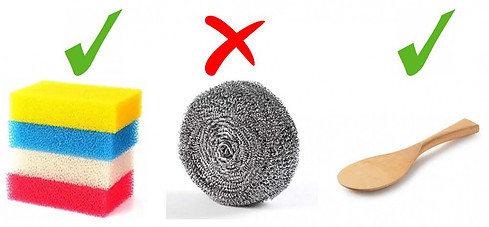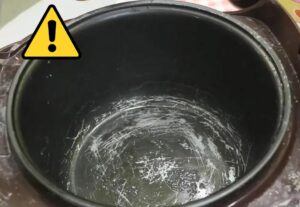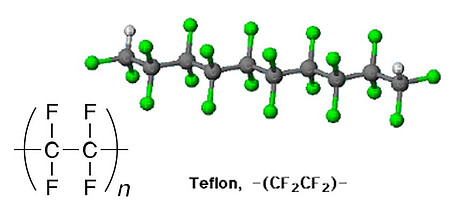Cooking rice with a rice cooker is a common practice in many households, providing convenience and consistently well-cooked grains. However, the wear and tear on these appliances, particularly the scratching of the inner pot, can lead to concerns about safety and potential health risks. In this comprehensive guide, we will delve into the materials commonly used in rice cookers, the safety implications of scratched surfaces, and practical solutions for a worry-free cooking experience.
Table of Contents
Is It Safe To Use A Scratched Rice Cooker?
A teflon is a non reactive material and will deteriorate when temperature reaches 260 celsius. Ingested teflon flakes most probably will just pass through the body. The amount of aluminum that will leach into the rice is insufficient to form health risks as well.
Understanding the Composition of Rice Cooker Inner Pots
Before delving into the safety considerations of scratched rice cookers, it’s essential to examine the materials comprising the inner pot of a rice cooker.
Rice cooker inner pots are commonly crafted from metals known for their excellent heat conduction properties. The primary materials used include aluminum, stainless steel, copper, and cast iron.
Among these metals, aluminum emerges as the predominant choice for rice cooker inner pots. This preference is attributed to aluminum’s superior heat conductivity compared to other metals, coupled with its cost-effectiveness and widespread availability. Copper, while boasting better heat conductivity than aluminum, comes at a significantly higher cost—three times that of aluminum. Although aluminum is pricier than stainless steel, its heat conductivity surpasses stainless steel by a considerable margin, being 16 times more effective.
To enhance the cooking experience, a layer of non-stick coating is typically applied to the surface of aluminum inner pots. This coating, commonly known as Teflon, serves the crucial purpose of preventing rice from adhering to the pot after the cooking process.
The choice of materials for rice cooker inner pots involves a careful balance between heat conductivity, cost considerations, and the practicality of a non-stick surface, with aluminum emerging as the prevalent and pragmatic option for most manufacturers.
What is Teflon?
A significant feature of many rice cooker inner pots is the non-stick coating, often referred to as Teflon. Scientifically known as polytetrafluoroethylene (PTFE), Teflon is a non-reactive material applied to provide a smooth and non-stick surface to cookware. Despite its non-reactive nature, questions arise when this coating is scratched, and particles may find their way into the cooked rice.
Understanding Teflon’s Stability
When faced with a scratched rice cooker, the question of safety looms, particularly concerning the Teflon coating. Teflon, a non-reactive chemical substance, begins to break down at 260 degrees Celsius and decomposes above 350 degrees Celsius. Fortunately, the maximum temperature of a rice cooker is 100 degrees Celsius; beyond this, the cooker either turns off or switches to a warm setting.
Health Implications of Scratched Rice Cookers
Concern arises when contemplating the potential ingestion of Teflon flakes that may detach from the scratched inner pot and mix with the rice. The likelihood of harm is low, as the non-reactive nature of Teflon suggests that any ingested material would likely pass through the body without adverse effects.
Here are some specific sources that support the claim that the likelihood of harm from ingesting Teflon flakes is low:
- Food and Chemical Toxicology (2009): “The chronic oral toxicity of polytetrafluoroethylene (PTFE) in rats.”
- Toxicology and Applied Pharmacology (2006): “The in vitro and in vivo toxicity of polytetrafluoroethylene (PTFE) particles.”
- American Academy of Pediatrics (2017): “Polytetrafluoroethylene (PTFE) and perfluorooctanoic acid (PFOA) in children’s health.”
Historically, Teflon (Polytetrafluoroethylene-PTFE) was manufactured with perfluorooctanoic acid (PFOA), a substance associated with health risks such as liver disease, testicular cancer, and thyroid disorders. Today, most manufacturers have phased out PFOA, replacing it with GenX chemicals. While the toxicity of GenX chemicals is a concern, checking the quality and specifications of your cookware can help you make informed decisions.
Here are some specific sources that support the claim that Teflon was historically manufactured with PFOA and that most manufacturers have phased out PFOA in favor of GenX chemicals:
- Environmental Working Group (2022): “Teflon: Still a Problem.”
- U.S. Environmental Protection Agency (2020): “GenX Chemicals: Toxicity Assessment.”
- University of North Carolina (2019): “GenX Chemicals Cause Liver Damage in Mice.”
- U.S. Environmental Protection Agency (2016): “GenX Chemicals: Proposed Health Criteria.”
For safety, replacing a scratched rice cooker inner pot is advisable, and it doesn’t have to break the bank. Alternatively, opting for a rice cooker with a stainless steel inner pot provides peace of mind, alleviating worries about potential Teflon-related health issues.
If you are concerned about your exposure to GenX chemicals, avoid using Teflon-coated cookware, choose cookware that is made with natural materials, such as cast iron, stainless steel, or ceramic.
Aluminum Exposure and Risks
Moving from coating concerns to the material of the inner pot, most rice cooker inner pots are crafted from aluminum. When scratched, the aluminum surface is exposed, prompting questions about its impact on health. Aluminum’s potential toxicity to the nervous system has been linked to conditions like Alzheimer’s and Parkinson’s.
The concern is whether the exposed aluminum could leach into the rice during cooking. On average, adults consume 7 to 9 milligrams of aluminum daily through food, and additional exposure can occur through products like cosmetics and toothpaste. Cooking acidic foods with an aluminum pot increases aluminum absorption, but the daily extra intake from non-coated aluminum cookware (3.5 mg) is considered within safe limits.
Here are some specific sources that support the claim that cooking rice in an aluminum pot can increase the amount of aluminum that leaches into the food:
- Food Chemistry (2009): “Aluminum leaching from aluminum cookware into rice.”
- Journal of Food Science (2011): “Effect of cooking time and pH on aluminum leaching from aluminum cookware into rice.”
- European Food Safety Authority (EFSA): “Scientific Opinion on the risk assessment of aluminium.”
While aluminum can pose health risks in large quantities, a scratched inner pot of a rice cooker is unlikely to raise significant concerns. The amount of aluminum leaching into the rice is insufficient to cause harm, especially considering that rice is not an acidic food. In making choices about our kitchenware, understanding the nuances allows us to cook with confidence and prioritize our well-being.
Preserving Your Rice Cooker: Tips to Prevent Scratching
The non-stick coating on rice cooker inner pots is susceptible to scratches, especially from hard and sharp objects. To ensure the longevity of your rice cooker and maintain its non-stick efficiency, consider the following preventive measures:
Gentle Cleaning Practices:
When cleaning the inner pot, steer clear of hard metal cleaning tools such as metal dish scrubbers. Instead, opt for a softer alternative like a sponge scrubber. This switch not only ensures effective cleaning but also contributes to prolonging the inner pot’s lifespan.
Soft Fabric for Cleaning:
An additional method to prevent scratches is to use a soft fabric when cleaning the pot. Gently rubbing the inner pot with a soft cloth helps remove residues without causing damage. This gentle approach preserves both the non-stick coating and the overall integrity of the rice cooker.
Mindful Rice Scooping:
When it comes to scooping rice from the pot, avoid using metal spoons or utensils. Opt for wooden or plastic scoops to prevent scratching the non-stick surface. This small adjustment in your kitchen routine can significantly contribute to the prolonged durability of your rice cooker.
By incorporating these simple practices into your rice cooker maintenance routine, you can safeguard the non-stick coating, ensuring that your rice cooker remains a reliable and efficient kitchen companion for an extended period.

Conclusion
In conclusion, the safety of using a scratched rice cooker relies on a comprehensive understanding of the materials involved. Teflon and aluminum, when used appropriately, pose minimal risks to health. If lingering concerns persist, consider replacing the inner pot or opting for a rice cooker with a stainless steel alternative. Cooking should be a worry-free experience, and armed with the right knowledge, you can enjoy delicious rice without compromising your well-being.

